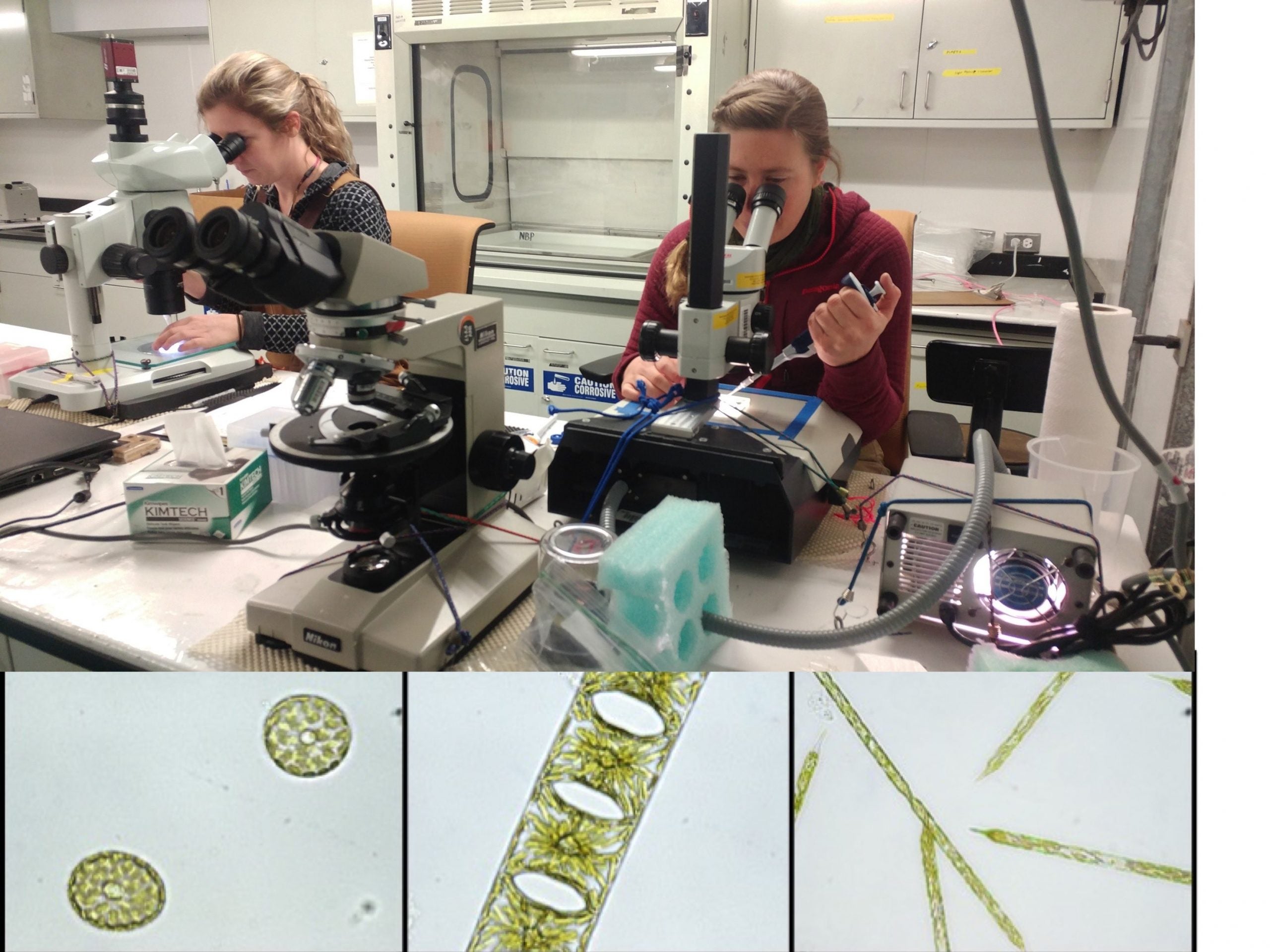We are almost across the Drake Passage! Later today, we will begin intensive sampling along the coast of the Antarctic Peninsula, our second of five regions we will target during our time at sea. Here on the Antarctic Peninsula, we will continue our work to carefully isolate single cells of diatoms from each station that will be cultured in a bright cold incubator on the ship. These single cells will grow and divide throughout our month at sea, and represent diverse individuals from the plankton community. At the end of the cruise, hundreds of diatom cultures will be shipped back to our home laboratories where we can test their potential to withstand predicted future climate changes expected to impact Antarctic waters. Here are some photos of the bright and beautiful diatom species we are culturing on board, and the focused microscopy and pipetting needed to capture these tiny cells on a moving ship!
Our sampling along the Antarctic Peninsula aligns with a historic ecological sampling series known as the Palmer Antarctica Long Term Ecological Research study area (LTER). The Palmer Antarctica LTER is one of several time series within an ecological research network comprised of stations distributed throughout the world. The Palmer Antarctica LTER is dedicated to collecting data over time to examine changes in the polar marine biome. We have chosen to align our research with the Antarctic LTER as it provides a valuable historical context to our work and to the ecology of this sensitive region. In our research, we’re interested in subjecting phytoplankton communities to potential future environmental conditions. This work is made more powerful when informed by an historical ecological perspective. Data collected by the LTER can help us to answer questions that we could not answer in a one-month cruise such as: “What are the typical environmental conditions along the Antarctic Peninsula during this time of year (Austral summer)? Are the conditions we’re experiencing here ‘normal’? How has this region changed over the past few decades? ” You can think of time series like the LTER as the long-term medical record of an ecosystem. Our own research takes a detailed snapshot across a broader region, like an MRI. Our future laboratory work will act as a stress test on the diatoms we collect here. The long term ‘medical history’ provided by the LTER offers invaluable context to our own research. You can find out more about the Palmer LTER here: pal.lternet.edu. Thanks Palmer LTER! We’ll be sure to wave hello as we sail past the Antarctic Peninsula! Posted by: Dr. Kerry Whittaker (Rynearson lab alumna)
Also, make sure to check out our recent Ask Me Anything post on Reddit at redd.it/5kwock/. It’s live today (Dec 29) from 1-3pm EST. You can also check out the archived responses after we finish.
Top photo. Olivia Ahearn and Dr. Kerry Whittaker isolate single cells of diatoms using microscopes and careful pipetting techniques. These cells are kept as cool as possible during the process, and transferred to nutrient-rich media. During the cruise these diatom cells will grow and divide in a lighted incubator that stays at a constant (chilly!) 2°C!
Bottom photo. Some diatom species we are isolating and culturing at sea. These are all cold-loving polar diatoms capable of withstanding long periods of low light and some of the coldest seawater temperatures in the world. These productive diatoms fuel a diverse and flourishing Polar ecosystem. Species shown here, from left to right, include the bagel-like Porosira glacialis, spindly Proboscia alata, and elegant Eucampia antarctica.

